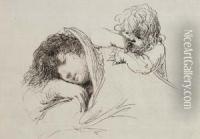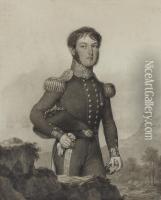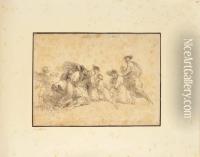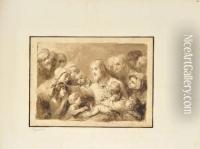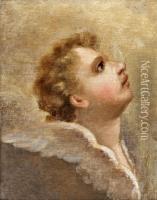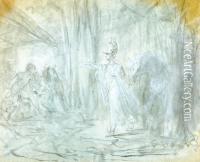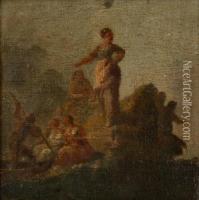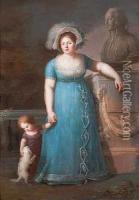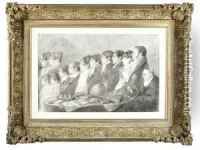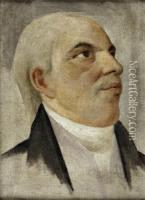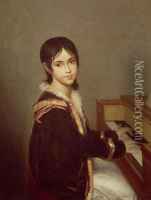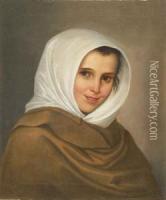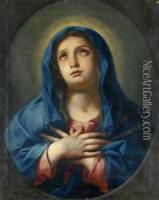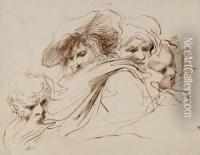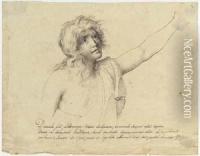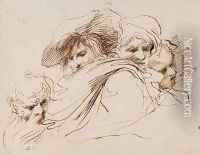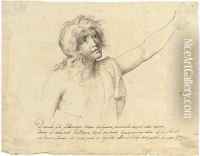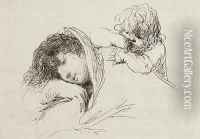Domingos Antonio de Sequeira Paintings
Domingos Antonio de Sequeira was a prominent Portuguese painter, draughtsman and etcher, born on March 10, 1768, in Lisbon, Portugal. Considered one of the leading artists of his time in Portugal, Sequeira's career spanned the late 18th and early 19th centuries, a period marked by significant political and social changes in Europe, including the French Revolution and the Napoleonic Wars.
Sequeira showed an early talent for art and was sent to study at the Royal Academy of Fine Arts in Lisbon. His skill and dedication quickly became apparent, and he garnered the attention and patronage of important figures in Portuguese society. In 1788, Sequeira traveled to Rome to further his studies, which was a common practice for European artists seeking to refine their skills and learn from the classical and Renaissance masters.
In Rome, Sequeira was influenced by the Neoclassical style, which was prevalent at the time. He absorbed the principles of classical art and was particularly impressed by the works of Raphael and Nicolas Poussin. However, Sequeira also maintained a keen interest in the Baroque tradition, and this combination of influences is evident in his artworks, which often feature dramatic lighting, strong emotional content, and meticulous attention to detail.
After several years in Italy, Sequeira returned to Portugal and was appointed court painter by Queen Maria I. His role included creating portraits of the royal family and other notable individuals, as well as historical and religious paintings. Among his notable works from this period are the paintings for the São Roque Church in Lisbon, which showcase his mastery of large-scale religious compositions.
Sequeira's artistic output was not limited to painting; he was also an accomplished printmaker, and his etchings contributed to the spread of his reputation beyond Portugal. His work reflects the turbulent times he lived in, and he was known to have liberal political views, which sometimes surfaced in his art.
The invasion of Portugal by Napoleon's forces in 1807 and the subsequent political strife had a profound impact on Sequeira's career. He was forced to navigate the complex political landscape, and in 1823, he decided to leave Portugal for Rome once more, where he would spend the remaining years of his life.
Domingos Antonio de Sequeira died on March 8, 1837, in Rome. Despite his death far from his homeland, his legacy in Portuguese art remained strong. He is remembered as a key figure in the transition from the Rococo style to Neoclassicism in Portugal and as an artist whose works reflect a unique blend of passion, elegance, and a deep understanding of the human condition.
